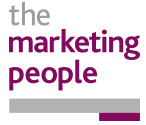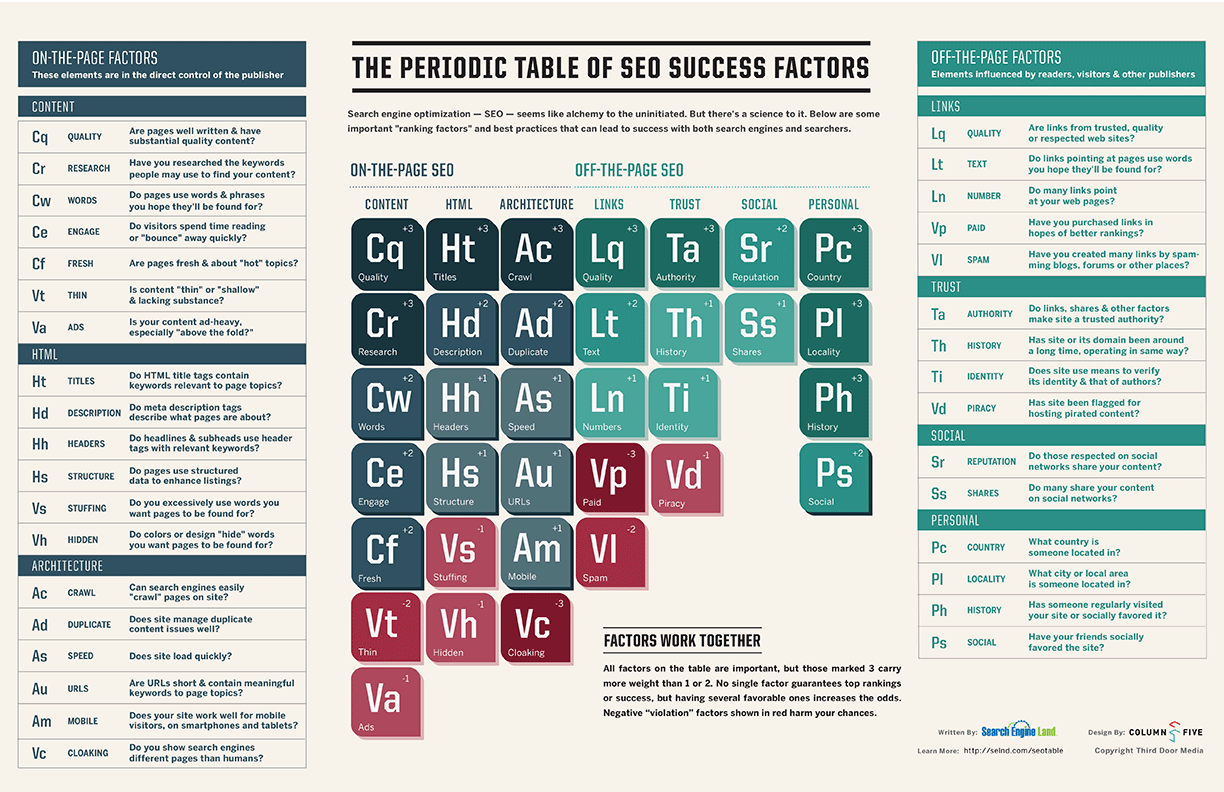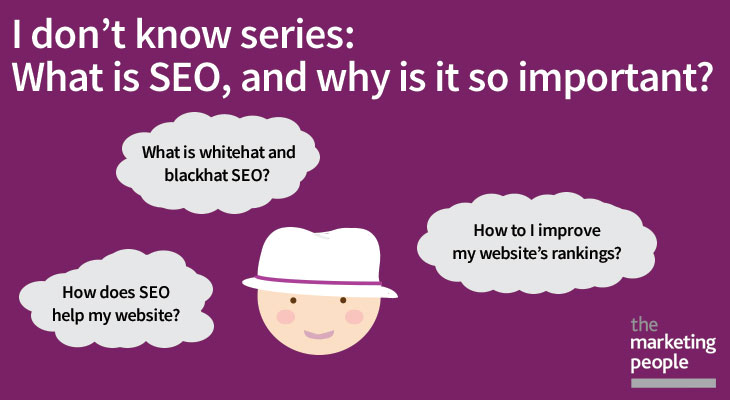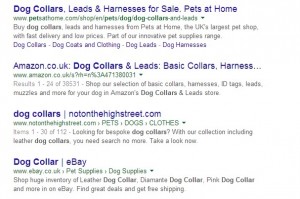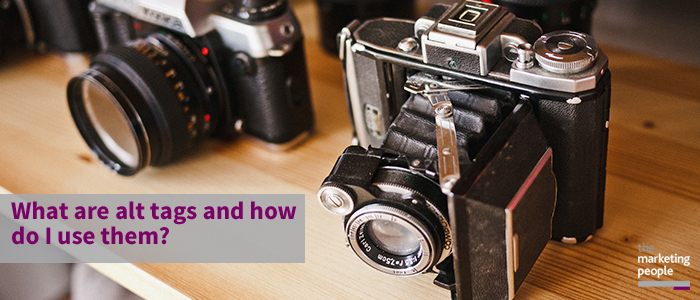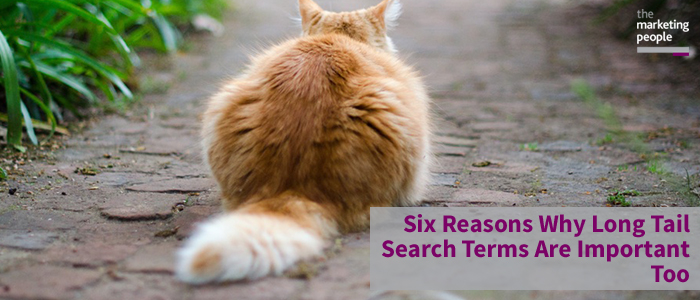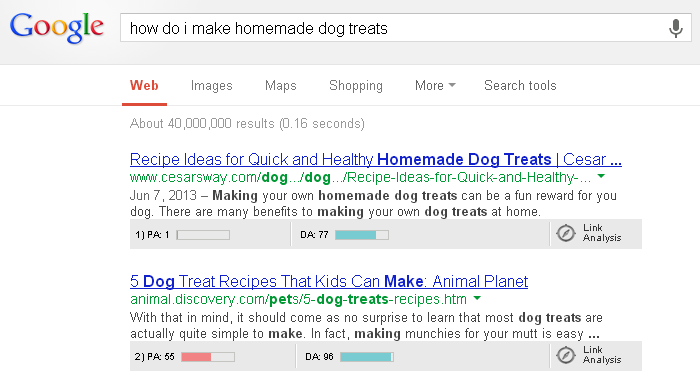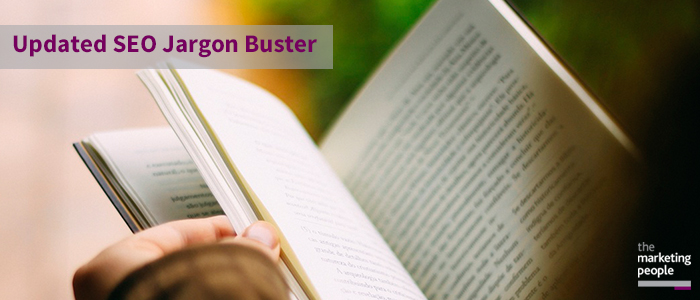

We published our first SEO jargon buster in 2012 (with just 26 definitions!), and a lot has changed in SEO since then.
Our latest iteration has expanded hugely and now contains over 80 definitions.
Numbers
301 Redirect – If you switch domains, or delete a page, the URL will present users with an error message. If you carry out a 301 redirect on these pages, users will be taken to another page on your website and will not see the error message.
404 error – A message that appears with a web page no longer exists, or has moved to a different URL.
A
Above the fold – The part of a web page that users can see before scrolling down the page. It’s recommended that you place the most important information above the fold.
Algorithm – A formula search engines, programs, and computers follow to solve a problem and come up with a solution. In SEO, search engines use algorithms to decide what order to show search results in.
Alt text – Text used to describe an image. This will show up in place of an image if it cannot be loaded. Alt text is also useful for people using screen readers. And for telling search engines what the image is of.
Analytics – Data which shows how something is performing. For example, your website analytics will show how many people have visited your website, the most popular pages, your bounce rate, and so on.
Anchor text – The clickable text that is part of a hyperlink. For example: “Find out more about our marketing services”. In this case ‘marketing services’ is the anchor text.
Authority links – Links from authoritative websites, such as the BBC, .gov, the NHS, etc.
B
Backlink – A link to your website from another website.
Below the fold – This is any part of a website which users will have to scroll down to see.
Blackhat SEO – SEO techniques which do not comply with best practices. Blackhat SEO techniques are used to try and trick search engines into giving a website a higher search rankings than it deserves. Using these techniques can mean you are penalised or de-indexed from search engines.
Blog – Short for weblog, a blog is traditionally an online journal. However, it has evolved to be somewhere that businesses can share useful hints and tips about their products. Information about offers, events, and more. It has become a way for businesses to connect and engage with their audience.
Bounce rate – The percentage of people who visit your website and leave before visiting another page.
C
Canonical URL – If there are multiple URLs that show the same piece of content. A canonical URL is used to tell search engines which one is the original and which one should be counted.
CAPTCHA – Completed Automated Public Turing test to tell Computer and Humans Apart – A ‘test’ used to figure out whether the user is a computer or human. You will often see these when submitting forms. The test usually involves typing letters and numbers into a box.
Cloaking – A technique used to show search engines and users different content. This is usually done to try and improve a page’s search ranking.
CMS – Content Management System – A system, such as WordPress or Concrete5, that allows you manage and update a website.
Content scraping – Copying content and posting it on another website without permission.
Conversion – When a user completes a ‘goal’. This can be a purchase, downloading an ebook, filling in a form.
Conversion rate – The percentage of people who visited your website and completed a ‘goal’. For example, the percentage of people who visit your website and then purchase. Or maybe the percentage of people who visit a landing page and download your ebook.
Cookie – In this case, we’re not talking about the delicious things you eat. Cookies are used to identify users and improve their user experience. For example remember your log in details.
Crawl – When search engine bots visit your website and follow links to other pages on your site. Even out to other websites, this is called crawling.
C Abbreviations
CPC – Cost Per Click – In Pay Per Click (PPC) advertising, your CPC is how much it will cost you every time someone clicks on the advert.
CPM – Cost Per Thousand – This is the cost per thousand impressions.
CSS – Cascading Style Sheets – This allows web designers to create ‘style sheets’, which give them more control over how a page, and the elements that make it up, will look.
D
Deep link – This is a link to a page on a website that isn’t a homepage. For example, linking to a specific blog post would be considered a deep link.
Directory – A website listing businesses, containing information about their name, what they do, their contact details, their website, opening hours, and more.
Dofollow – A dofollow link is a link that you are telling search engines to ‘count’, which will pass on some SEO benefit to another website.
Domain name – A domain name is made up of the name of a website followed by a generic top-level domain, such as .co.uk, .uk, .org, etc.
Domain authority – This is a 100-point scale developed by Moz, that predicts how well a website is likely to rank in search results. It’s a measure of the ‘strength’ of a website.
Duplicate content – Copy which appears exactly the same in multiple places, either on the same website, or different websites. An example of duplicate content is several retailers who are all using the manufacturers description for a product. Duplicate content can result in SEO penalties.
E
Ecommerce – Buying or selling products or services electronically.
External link – A link out to another website.
G
Grey hat SEO – SEO techniques which bend best practice rules, rather than completely breaking them.
H
Hits – A request for something on a web page to load, such as the page itself, or an image. Hits are not a good indication of how much traffic your website has had as each image count as a ‘hit’. If you have 10 images on a page and the page was loaded twice, you’d see 20 hits.
HTML – HyperText Markup Language – This is the language used to tell browsers how a website should look and how to display it.
I
Impressions – The number of people who have seen something. For example, if 100 people see a search result, or an advert, it will have had 100 impressions.
Index – These are the databases search engines refer to. It will contain information about websites that have been crawled. It is possible to be removed from the database (de-indexed), which means your website will not show up in search results.
K
Keyword density – The percentage of times a key word, or key phrase, has been used on a web page. It’s important to note that there is no ideal keyword density, so don’t feel that ramming copy full of keywords will help your search rankings.
Keyword research – When you carry out research to see what kind of words and phrases your audience use to find your products and services.
Keyword stuffing – When words or phrases are stuffed into copy as much as possible, which often makes the copy hard to follow and understand, in an attempt to improve search rankings.
Keywords / key phrases – The words and phrases your audience use to find your products and services, and the words you want to perform well for in search rankings.
L
Link bait – Content that is created in an attempt to generate links back to the website / piece of content.
Link building – Techniques used to build links back to your website. This includes creating helpful content that people want to share.
Link farm – A group of websites that all link to each other with the intention of boosting search rankings by creating links. This is not a recommended SEO practice.
Link juice – A colloquial term used when talking about SEO benefits gained from / given by a link.
Linking C-blocks – This refers to IP addresses, and is used by search engines to determine whether websites linking to each other might be related. If websites on the same server, with the same c-blocks, are linking to each other, it’s a signal that the links might not be natural and might be owned by the same person.
Local SEO – When you specifically target higher search rankings in the geographic location around where your business is / has locations.
Long tail key words – These are key phrases made up of a few words. For example “purple non-leather dog collars” is a long tail key phrase. It’s much easier to try and rank higher for a long tail key phrase than a short tail keyphrase.
M
Meta description – Tells search engines what a page is about. This shows up as the description in search results, so it needs to be interesting and engaging to encourage people to click on your results.
Meta keywords – A meta tag that allows you to list keywords used on the page, and tells search engines what a page is about. Due to the abuse this feature received, meta keywords hold very little SEO value now.
Meta title – This is the title of a page that shows up in search results.
Mobilegeddon – A colloquial term to describe Google’s algorithm update in April 2015 that means websites with mobile-friendly websites may perform better in mobile search results, and those without a mobile-friendly website may have their rankings decreased in mobile search results.
N
Nofollow link – A link to another website which you are telling search engines not to count as providing any SEO benefit.
Non-organic search results – These are paid advertisements that appear on search result pages.
O
Off page SEO – Techniques used to improve a website’s search rankings that are not carried out on the website itself. For example, link building.
On page SEO – Techniques used to improve a website’s search ranking that are carried out on the website, such as making sure your website is responsive.
Organic search – These are search results that are not paid for.
P
Pagerank (PR) – This is what Google use to rank websites in their search results.
Pageview – The number of views a page has had. For example, if one person visits your page twice, it has had two pageviews.
Panda (Google Panda) – A Google algorithm that was first released in February 2011, and focused on improving rankings of websites providing high quality content, and lowering the rankings of poor websites that provided low quality content.
Penguin (Google Penguin) – A Google algorithm launched in April 2012 that aimed to catch and lower the search rankings of websites using black hat SEO techniques, such as buying links or keyword stuffing.
PPC – Pay-Per-Click – An advertising model where the advertiser pays for each click on the advert.
R
Ranking – Where you are showing up in search results.
Reciprocal links – When two websites agree to link to each other. Done correctly, the websites will link to each other because website A provides useful content for readers of website B, and vice versa. Excessive reciprocal links, especially when there is no relevance or need to, could harm your search rankings.
Rich snippets – Extra information that appears in a search result, such as star ratings, price range, and time required to complete a recipe, and so on.
ROI – Return On Investment – The financial return, or benefit, you will get as a result of an investment.
RSS feed – Really Simple Syndication – If an RSS feed is set up on your blog, new posts will be sent to anyone who subscribes to your RSS feed. You can choose the send the entire post, or just a snippet of it.
S
Schema markup – Code you can put in your website to give search engines more information about you, and give users better and more relevant results. For example, if you’re a venue, or a performer, you could share dates. You can share things like price, star ratings, how long a recipe will take.
SEM – Search Engine Marketing – A marketing method which focuses on improving search rankings, by doing things such as ensuring a website is SEO-friendly, and creating SEO-friendly content.
SEO – Search Engine Optimisation – Techniques used to improve a website’s visibility in search results.
SERP – Search Engine Results Page – The pages that show a list of search results.
Short tail keywords – (Also known as broad match) These are key phrases which contain around one or two words. For example “Black shoes”. Due to the small number of words, these are often very broad search terms.
Site map – A list of pages on a website that people and search engine crawlers can get to. An XML sitemap makes it easier for search engine bots to crawl your website, while a HTML sitemap can make it easier for users to find their way around your website.
Referrer spam – When spam bots ‘visit’ your website, skewing your analytics data.
Spiders – A program used by search engines to crawl web pages.
U
Unique visitor – The number of individuals who have visited your website.
URL – Uniform Resource Location – The address of a web page.
W
White hat SEO – SEO practices which comply with search engine guidelines. Do not attempt to trick them into giving a website a higher search ranking than it deserves.
Need help getting to grips with your SEO? Contact us today on 01543 495752 for a no obligation chat. Or you can read more about SEO in our blogs.


